-
EXECUTIVE SUMMARY
-
MARKET ATTRACTIVENESS ANALYSIS 16
- GLOBAL
-
AIRLESS PACKAGING MARKET, BY MATERIAL 17
-
BY PACKAGING TYPE 18
-
GLOBAL AIRLESS PACKAGING MARKET,
-
GLOBAL AIRLESS PACKAGING MARKET, BY DISPENSER TYPE
-
GLOBAL AIRLESS PACKAGING MARKET, BY END-USE 20
-
GLOBAL AIRLESS
-
PACKAGING MARKET, BY REGION 21
-
MARKET INSIGHTS
-
MARKET INTRODUCTION
-
DEFINITION 24
-
SCOPE OF THE STUDY 24
-
MARKET STRUCTURE 24
-
KEY BUYING CRITERIA 25
-
RESEARCH METHODOLOGY
-
RESEARCH PROCESS
-
PRIMARY RESEARCH 27
-
SECONDARY RESEARCH 28
-
MARKET SIZE
-
ESTIMATION 28
-
TOP-DOWN AND BOTTOM-UP APPROACH 29
-
FORECAST MODEL
-
LIST OF ASSUMPTIONS 31
-
MARKET DYNAMICS
-
INTRODUCTION
- DRIVERS 33
- DRIVERS IMPACT ANALYSIS, 35
- RESTRAINTS 36
- RESTRAINT IMPACT ANALYSIS,
- OPPORTUNITY 38
-
OF PRODUCTS 33
-
GROWING NEED FOR BRAND DIFFERENTIATION 35
-
STRINGENT NORMS REGARDING PLASTIC PACKAGING 37
-
MARKET FACTOR ANALYSIS
-
SUPPLY CHAIN ANALYSIS 39
- DESIGN AND DEVELOPMENT
- RAW MATERIAL SUPPLY 39
- AIRLESS PACKAGING MANUFACTURE 39
- END USE 40
-
PORTER’S FIVE FORCES MODEL 40
- THREAT
- BARGAINING POWER OF SUPPLIERS 41
- BARGAINING
- THREAT OF SUBSTITUTES 41
- RIVALRY 41
-
OF NEW ENTRANTS 40
-
POWER OF BUYERS 41
-
GLOBAL AIRLESS PACKAGING MARKET, BY MATERIAL
-
OVERVIEW 42
-
PLASTIC
-
GLASS 43
-
OTHERS 44
-
GLOBAL AIRLESS PACKAGING MARKET,
-
BY PACKAGING TYPE
-
OVERVIEW 45
-
BOTTLES & JARS 46
-
TUBES
-
BAGS & POUCHES 46
-
GLOBAL AIRLESS PACKAGING MARKET, BY DISPENSER
-
TYPE
-
OVERVIEW 48
-
PUMPS 49
-
DROPPER 49
-
TWIST &
-
CLICK 49
-
GLOBAL AIRLESS PACKAGING MARKET, BY END-USE
-
OVERVIEW
-
PERSONAL & HOME CARE 52
-
PHARMACEUTICAL 52
-
FOOD
-
& BEVERAGES 52
-
GLOBAL AIRLESS PACKAGING MARKET, BY REGION
-
OVERVIEW 54
-
ASIA-PACIFIC 56
- CHINA 59
- JAPAN 61
- INDIA 63
- REST OF ASIA-PACIFIC 65
-
EUROPE 67
- FRANCE 71
- UK 73
- ITALY 75
-
GERMANY 69
-
REST OF EUROPE 77
-
NORTH AMERICA 79
- US 82
- CANADA
- MEXICO 86
-
REST OF WORLD 88
- MIDDLE EAST &
- SOUTH AMERICA 92
-
AFRICA 90
-
COMPETITIVE LANDSCAPE
-
COMPETITIVE
-
OVERVIEW 94
-
COMPETITIVE BENCHMARKING 95
-
MARKET SHARE ANALYSIS,
-
KEY DEVELOPMENTS AND GROWTH STRATEGIES 96
- NEW
- MERGERS & ACQUISITIONS
- PARTNERSHIP 99
-
PRODUCT DEVELOPMENT/SERVICE DEPLOYMENT 96
-
COMPANY PROFILES
-
APTAR GROUP, INC.
- COMPANY OVERVIEW 100
- FINANCIAL OVERVIEW 101
- KEY DEVELOPMENTS 104
- SWOT ANALYSIS
- KEY STRATEGIES 105
-
PRODUCTS OFFERED 102
-
SILGAN HOLDINGS INC. 106
- FINANCIAL OVERVIEW 106
- PRODUCTS OFFERED
- KEY DEVELOPMENTS 107
- SWOT ANALYSIS 108
- KEY
-
COMPANY OVERVIEW 106
-
STRATEGIES 108
-
QUADPACK 109
- COMPANY OVERVIEW 109
- PRODUCTS OFFERED 110
- KEY DEVELOPMENTS
-
FINANCIAL OVERVIEW 109
-
ALBEA S.A. 116
- COMPANY OVERVIEW 116
- FINANCIAL
- PRODUCTS OFFERED 116
-
OVERVIEW 116
-
FUSION PKG 119
- FINANCIAL OVERVIEW 119
- PRODUCTS OFFERED
- KEY DEVELOPMENTS 124
- SWOT ANALYSIS 124
- KEY
-
COMPANY OVERVIEW 119
-
STRATEGIES 125
-
HCP PACKAGING 126
- COMPANY OVERVIEW 126
- PRODUCTS OFFERED 126
- KEY DEVELOPMENTS
- SWOT ANALYSIS 127
- KEY STRATEGIES 127
-
FINANCIAL OVERVIEW 126
-
LUMSON
- COMPANY OVERVIEW 128
- FINANCIAL OVERVIEW 128
- PRODUCTS OFFERED 128
- KEY DEVELOPMENTS 130
-
S.P.A 128
-
APC PACKAGING
- COMPANY OVERVIEW 131
- FINANCIAL OVERVIEW 131
- KEY DEVELOPMENTS 134
-
PRODUCTS OFFERED 131
-
APPENDIX
-
RELATED REPORTS 135
-
LIST OF ABBREVIATION 135
-
LIST OF TABLES
-
LIST OF ASSUMPTIONS 31
-
GLOBAL AIRLESS PACKAGING MARKET, BY
-
MATERIAL, 2023-2032 (USD MILLION) 44
-
GLOBAL AIRLESS PACKAGING MARKET,
-
BY PACKAGING TYPE, 2023-2032 (USD MILLION) 47
-
GLOBAL AIRLESS PACKAGING
-
MARKET, BY DISPENSER TYPE, 2023-2032 (USD MILLION) 50
-
GLOBAL AIRLESS
-
PACKAGING MARKET, BY END-USE, 2023-2032 (USD MILLION) 53
-
GLOBAL AIRLESS
-
PACKAGING MARKET, BY REGION, 2023-2032 (USD MILLION) 55
-
ASIA-PACIFIC:
-
AIRLESS PACKAGING MARKET, BY COUNTRY, 2023-2032 (USD MILLION) 57
-
ASIA-PACIFIC:
-
AIRLESS PACKAGING MARKET, BY MATERIAL, 2023-2032(USD MILLION) 57
-
ASIA-PACIFIC:
-
AIRLESS PACKAGING MARKET, BY PACKAGING TYPE, 2023-2032 (USD MILLION) 57
-
TABLE
-
ASIA-PACIFIC: AIRLESS PACKAGING MARKET, BY DISPENSER TYPE, 2023-2032 (USD MILLION)
-
ASIA-PACIFIC: AIRLESS PACKAGING MARKET, BY END-USE, 2023-2032 (USD
-
MILLION) 58
-
CHINA: AIRLESS PACKAGING MARKET, BY MATERIAL, 2023-2032(USD
-
MILLION) 59
-
CHINA: AIRLESS PACKAGING MARKET, BY PACKAGINGTYPE, 2023-2032
-
(USD MILLION) 59
-
CHINA: AIRLESS PACKAGING MARKET, BY DISPENSER TYPE,
-
CHINA: AIRLESS PACKAGING MARKET, BY END-USE,
-
JAPAN: AIRLESS PACKAGING MARKET, BY MATERIAL,
-
JAPAN: AIRLESS PACKAGING MARKET, BY PACKAGING
-
TYPE, 2023-2032 (USD MILLION) 61
-
JAPAN: AIRLESS PACKAGING MARKET,
-
BY DISPENSER TYPE, 2023-2032 (USD MILLION) 62
-
JAPAN: AIRLESS PACKAGING
-
MARKET, BY END-USE, 2023-2032 (USD MILLION) 62
-
INDIA: AIRLESS PACKAGING
-
MARKET, BY MATERIAL, 2023-2032(USD MILLION) 63
-
INDIA: AIRLESS PACKAGING
-
MARKET, BY PACKAGING TYPE, 2023-2032 (USD MILLION) 63
-
INDIA: AIRLESS
-
PACKAGING MARKET, BY DISPENSER TYPE, 2023-2032 (USD MILLION) 64
-
INDIA:
-
AIRLESS PACKAGING MARKET, BY END-USE, 2023-2032 (USD MILLION) 64
-
REST
-
OF ASIA-PACIFIC: AIRLESS PACKAGING MARKET, BY MATERIAL, 2023-2032(USD MILLION) 65
-
REST OF ASIA-PACIFIC: AIRLESS PACKAGING MARKET, BY PACKAGING TYPE, 2023-2032
-
(USD MILLION) 65
-
REST OF ASIA-PACIFIC: AIRLESS PACKAGING MARKET, BY
-
DISPENSER TYPE, 2023-2032 (USD MILLION) 66
-
REST OF ASIA-PACIFIC: AIRLESS
-
PACKAGING MARKET, BY END-USE, 2023-2032 (USD MILLION) 66
-
EUROPE: AIRLESS
-
PACKAGING MARKET, BY COUNTRY, 2023-2032 (USD MILLION) 67
-
EUROPE: AIRLESS
-
PACKAGING MARKET, BY MATERIAL, 2023-2032(USD MILLION) 68
-
EUROPE: AIRLESS
-
PACKAGING MARKET, BY PACKAGING TYPE, 2023-2032 (USD MILLION) 68
-
EUROPE:
-
AIRLESS PACKAGING MARKET, BY DISPENSER TYPE, 2023-2032 (USD MILLION) 68
-
TABLE
-
EUROPE: AIRLESS PACKAGING MARKET, BY END-USE, 2023-2032 (USD MILLION) 69
-
TABLE
-
GERMANY: AIRLESS PACKAGING MARKET, BY MATERIAL, 2023-2032(USD MILLION) 69
-
GERMANY: AIRLESS PACKAGING MARKET, BY PACKAGING TYPE, 2023-2032 (USD
-
MILLION) 70
-
GERMANY: AIRLESS PACKAGING MARKET, BY DISPENSER TYPE,
-
GERMANY: AIRLESS PACKAGING MARKET, BY END-USE,
-
FRANCE: AIRLESS PACKAGING MARKET, BY MATERIAL,
-
FRANCE: AIRLESS PACKAGING MARKET, BY PACKAGING
-
TYPE, 2023-2032 (USD MILLION) 71
-
FRANCE: AIRLESS PACKAGING MARKET,
-
BY DISPENSER TYPE, 2023-2032 (USD MILLION) 72
-
FRANCE: AIRLESS PACKAGING
-
MARKET, BY END-USE, 2023-2032 (USD MILLION) 72
-
UK: AIRLESS PACKAGING
-
MARKET, BY MATERIAL, 2023-2032(USD MILLION) 73
-
UK: AIRLESS PACKAGING
-
MARKET, BY PACKAGING TYPE, 2023-2032 (USD MILLION) 73
-
UK: AIRLESS
-
PACKAGING MARKET, BY DISPENSER TYPE, 2023-2032 (USD MILLION) 74
-
UK:
-
AIRLESS PACKAGING MARKET, BY END-USE, 2023-2032 (USD MILLION) 74
-
ITALY:
-
AIRLESS PACKAGING MARKET, BY MATERIAL, 2023-2032 (USD MILLION) 75
-
TABLE 46
-
ITALY: AIRLESS PACKAGING MARKET, BY PACKAGING TYPE, 2023-2032 (USD MILLION) 75
-
ITALY: AIRLESS PACKAGING MARKET, BY DISPENSER TYPE, 2023-2032 (USD MILLION)
-
ITALY: AIRLESS PACKAGING MARKET, BY END-USE, 2023-2032 (USD MILLION)
-
REST OF EUROPE: AIRLESS PACKAGING MARKET, BY MATERIAL, 2023-2032(USD
-
MILLION) 77
-
REST OF EUROPE: AIRLESS PACKAGING MARKET, BY PACKAGING
-
TYPE, 2023-2032 (USD MILLION) 77
-
REST OF EUROPE: AIRLESS PACKAGING
-
MARKET, BY DISPENSER TYPE, 2023-2032 (USD MILLION) 78
-
REST OF EUROPE:
-
AIRLESS PACKAGING MARKET, BY END-USE, 2023-2032 (USD MILLION) 78
-
NORTH
-
AMERICA: AIRLESS PACKAGING MARKET, BY COUNTRY, 2023-2032 (USD MILLION) 80
-
TABLE
-
NORTH AMERICA: AIRLESS PACKAGING MARKET, BY MATERIAL, 2023-2032(USD MILLION)
-
NORTH AMERICA: AIRLESS PACKAGING MARKET, BY PACKAGING TYPE, 2023-2032
-
(USD MILLION) 80
-
NORTH AMERICA: AIRLESS PACKAGING MARKET, BY DISPENSER
-
TYPE, 2023-2032 (USD MILLION) 81
-
NORTH AMERICA: AIRLESS PACKAGING
-
MARKET, BY END-USE, 2023-2032 (USD MILLION) 81
-
US: AIRLESS PACKAGING
-
MARKET, BY MATERIAL, 2023-2032(USD MILLION) 82
-
US: AIRLESS PACKAGING
-
MARKET, BY PACKAGING TYPE, 2023-2032 (USD MILLION) 82
-
US: AIRLESS
-
PACKAGING MARKET, BY DISPENSER TYPE, 2023-2032 (USD MILLION) 83
-
US:
-
AIRLESS PACKAGING MARKET, BY END-USE, 2023-2032 (USD MILLION) 83
-
CANADA:
-
AIRLESS PACKAGING MARKET, BY MATERIAL, 2023-2032(USD MILLION) 84
-
CANADA:
-
AIRLESS PACKAGING MARKET, BY PACKAGING TYPE, 2023-2032 (USD MILLION) 84
-
TABLE
-
CANADA: AIRLESS PACKAGING MARKET, BY DISPENSER TYPE, 2023-2032 (USD MILLION)
-
CANADA: AIRLESS PACKAGING MARKET, BY END-USE, 2023-2032 (USD MILLION)
-
MEXICO: AIRLESS PACKAGING MARKET, BY MATERIAL, 2023-2032(USD MILLION)
-
MEXICO: AIRLESS PACKAGING MARKET, BY PACKAGING TYPE, 2023-2032
-
(USD MILLION) 86
-
MEXICO: AIRLESS PACKAGING MARKET, BY DISPENSER TYPE,
-
MEXICO: AIRLESS PACKAGING MARKET, BY END-USE,
-
REST OF WORLD: AIRLESS PACKAGING MARKET,
-
BY REGION, 2023-2032 (USD MILLION) 88
-
REST OF WORLD: AIRLESS PACKAGING
-
MARKET, BY MATERIAL, 2023-2032(USD MILLION) 89
-
REST OF WORLD: AIRLESS
-
PACKAGING MARKET, BY PACKAGING TYPE, 2023-2032 (USD MILLION) 89
-
REST
-
OF WORLD: AIRLESS PACKAGING MARKET, BY DISPENSER TYPE, 2023-2032 (USD MILLION) 89
-
MIDDLE EAST & AFRICA: AIRLESS PACKAGING MARKET, BY MATERIAL, 2023-2032(USD
-
MILLION) 90
-
MIDDLE EAST & AFRICA: AIRLESS PACKAGING MARKET, BY
-
PACKAGING TYPE, 2023-2032 (USD MILLION) 91
-
MIDDLE EAST & AFRICA:
-
AIRLESS PACKAGING MARKET, BY DISPENSER TYPE, 2023-2032 (USD MILLION) 91
-
TABLE
-
MIDDLE EAST & AFRICA: AIRLESS PACKAGING MARKET, BY END-USE, 2023-2032 (USD
-
MILLION) 91
-
SOUTH AMERICA: AIRLESS PACKAGING MARKET, BY MATERIAL,
-
SOUTH AMERICA: AIRLESS PACKAGING MARKET,
-
BY PACKAGING TYPE, 2023-2032 (USD MILLION) 92
-
SOUTH AMERICA: AIRLESS
-
PACKAGING MARKET, BY DISPENSER TYPE, 2023-2032 (USD MILLION) 93
-
SOUTH
-
AMERICA: AIRLESS PACKAGING MARKET, BY END-USE, 2023-2032 (USD MILLION) 93
-
TABLE
-
NEW PRODUCT DEVELOPMENT/SERVICE DEPLOYMENT 96
-
MERGERS & ACQUISITIONS
-
PARTNERSHIP 99
-
APTAR GROUP INC.: PRODUCTS OFFERED
-
APTARGROUP, INC.: KEY DEVELOPMENTS 104
-
SILGAN HOLDINGS
-
INC: PRODUCTS OFFERED 107
-
SILGAN HOLDINGS INC: KEY DEVELOPMENTS 107
-
QUADPACK: PRODUCTS OFFERED 110
-
QUADPACK: KEY DEVELOPMENTS
-
ALBÉA SA: PRODUCTS OFFERED 116
-
FUSION PKG:
-
PRODUCTS OFFERED 119
-
FUSION PKG: KEY DEVELOPMENTS 124
-
TABLE 94
-
HCP PACKAGING: PRODUCTS OFFERED 126
-
LUMSON S.P.A: PRODUCTS OFFERED
-
LUMSON S.P.A: KEY DEVELOPMENTS 130
-
APC PACKAGING:
-
PRODUCTS OFFERED 131
-
APC PACKAGING: KEY DEVELOPMENTS 134
-
LIST
-
OF FIGURES
-
MARKET SYNOPSIS 15
-
MARKET ATTRACTIVENESS
-
ANALYSIS: GLOBAL AIRLESS PACKAGING MARKET 16
-
GLOBAL AIRLESS PACKAGING
-
MARKET ANALYSIS, BY MATERIAL 17
-
GLOBAL AIRLESS PACKAGING MARKET ANALYSIS,
-
BY PACKAGING TYPE 18
-
GLOBAL AIRLESS PACKAGING MARKET ANALYSIS, BY
-
DISPENSER TYPE 19
-
GLOBAL AIRLESS PACKAGING MARKET ANALYSIS, BY END-USE
-
GLOBAL AIRLESS PACKAGING MARKET ANALYSIS, BY REGION 21
-
FIGURE
-
NORTH AMERICA: MARKET SHARE, BY COUNTRY (2023-2032) 22
-
EUROPE: MARKET
-
SHARE, BY COUNTRY (2023-2032) 22
-
ASIA-PACIFIC: MARKET SHARE, BY COUNTRY
-
(2023-2032) 23
-
REST OF THE WORLD: MARKET SHARE, BY COUNTRY (2023-2032)
-
GLOBAL AIRLESS PACKAGING MARKET: MARKET STRUCTURE 24
-
FIGURE
-
KEY BUYING CRITERIA OF THE GLOBAL AIRLESS PACKAGING MARKET 25
-
FIGURE 14
-
RESEARCH PROCESS OF MRFR 26
-
MARKET DYNAMICS: GLOBAL AIRLESS PACKAGING
-
MARKET 32
-
GROWTH TREND IN THE GLOBAL COSMETICS MARKET (2010–2020)
-
GLOBAL COSMETICS MARKET, BY REGION (%), 2020 34
-
FIGURE 18
-
DRIVERS IMPACT ANALYSIS: GLOBAL AIRLESS PACKAGING MARKET 35
-
POLYSTERENE
-
PRICE, 2023-2032, (USD/KG) 36
-
RESTRAINT IMPACT ANALYSIS: GLOBAL AIRLESS
-
PACKAGING MARKET 37
-
REVENUE GENERATED BY FMCG SECTOR OF INDIA, 2023-2032
-
(USD BILLION) 38
-
SUPPLY CHAIN ANALYSIS: GLOBAL AIRLESS PACKAGING
-
MARKET 39
-
PORTER''S FIVE FORCES ANALYSIS: GLOBAL AIRLESS PACKAGING
-
MARKET 40
-
GLOBAL AIRLESS PACKAGING MARKET, BY MATERIAL, 2020 (% SHARE)
-
GLOBAL AIRLESS PACKAGING MARKET, BY MATERIAL, 2023-2032 (USD MILLION)
-
GLOBAL AIRLESS PACKAGING MARKET, BY PACKAGING TYPE, 2020 (% SHARE)
-
GLOBAL AIRLESS PACKAGING MARKET, BY PACKAGING TYPE, 2023-2032
-
(USD MILLION) 46
-
GLOBAL AIRLESS PACKAGING MARKET, BY DISPENSER TYPE,
-
GLOBAL AIRLESS PACKAGING MARKET, BY DISPENSER TYPE,
-
GLOBAL AIRLESS PACKAGING MARKET, BY END-USE,
-
GLOBAL AIRLESS PACKAGING MARKET, BY END-USE, 2023-2032
-
(USD MILLION) 52
-
GLOBAL AIRLESS PACKAGING MARKET, BY REGION, 2020
-
TO 2025 (USD MILLION) 54
-
GLOBAL AIRLESS PACKAGING MARKET, BY REGION,
-
ASIA-PACIFIC: AIRLESS PACKAGING MARKET SHARE, BY
-
COUNTRY, 2020 (% SHARE) 56
-
EUROPE: AIRLESS PACKAGING MARKET SHARE,
-
BY COUNTRY, 2020 (% SHARE) 67
-
NORTH AMERICA: AIRLESS PACKAGING MARKET
-
SHARE, BY COUNTRY, 2020 (% SHARE) 79
-
REST OF WORLD: AIRLESS PACKAGING
-
MARKET SHARE, BY COUNTRY, 2020 (% SHARE) 88
-
REST OF WORLD: AIRLESS
-
PACKAGING MARKET, BY END-USE, 2023-2032 (USD MILLION) 90
-
BENCHMARKING
-
OF MAJOR COMPETITORS 95
-
MAJOR MANUFACTURER MARKET SHARE ANALYSIS,
-
APTAR GROUP, INC.: FINANCIAL OVERVIEW 101
-
FIGURE
-
APTAR GROUP, INC.: SWOT ANALYSIS 104
-
SILGAN HOLDINGS INC: FINANCIAL
-
OVERVIEW 106
-
SILGAN HOLDINGS INC: SWOT ANALYSIS 108
-
FIGURE 45
-
QUADPACK: FINANCIAL OVERVIEW 109
-
FUSION PKG: SWOT ANALYSIS 124
-
HCP PACKAGING: SWOT ANALYSIS 127

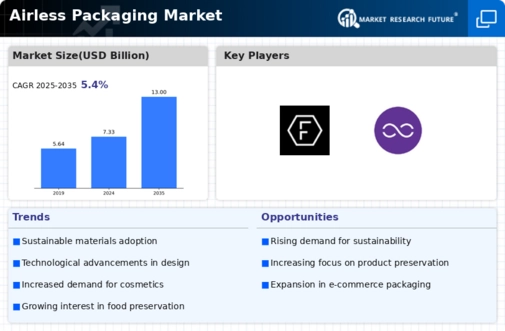
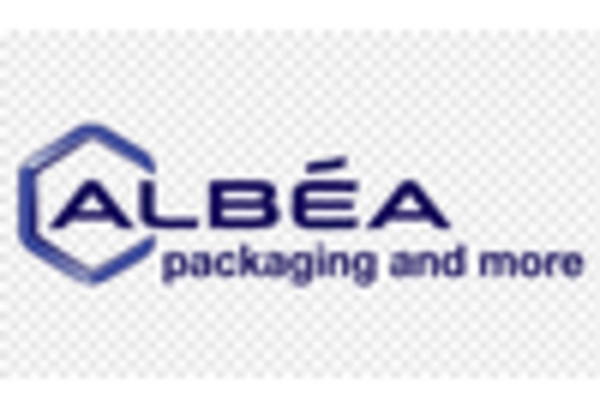
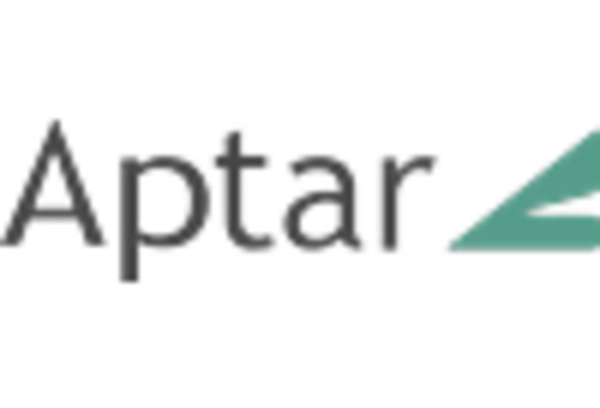
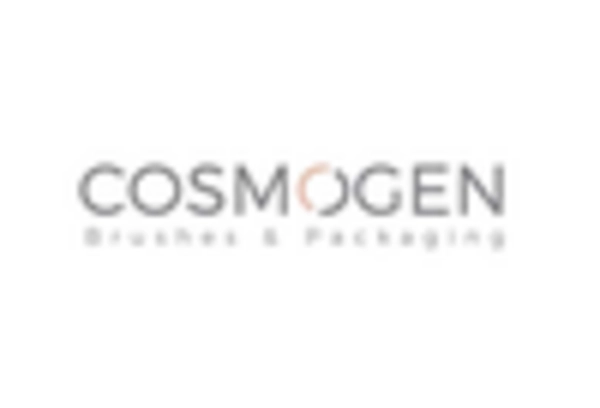
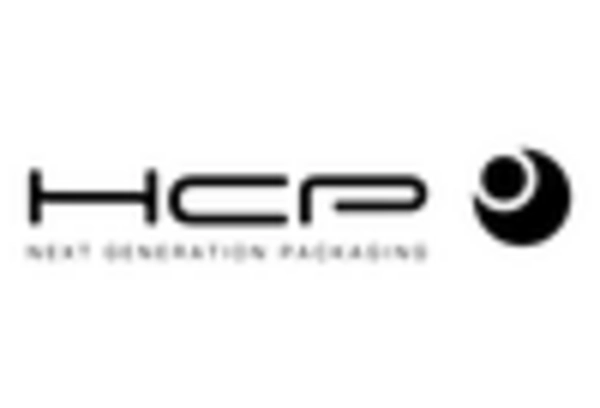
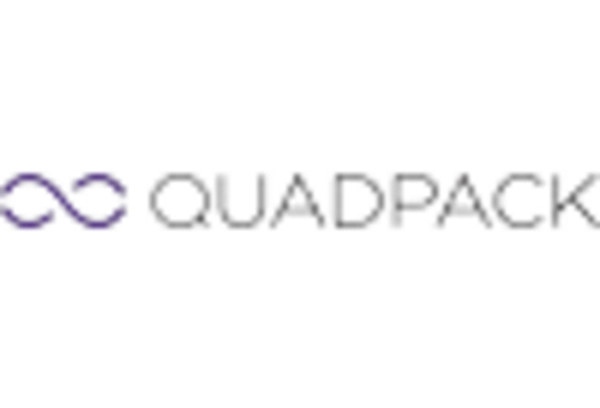
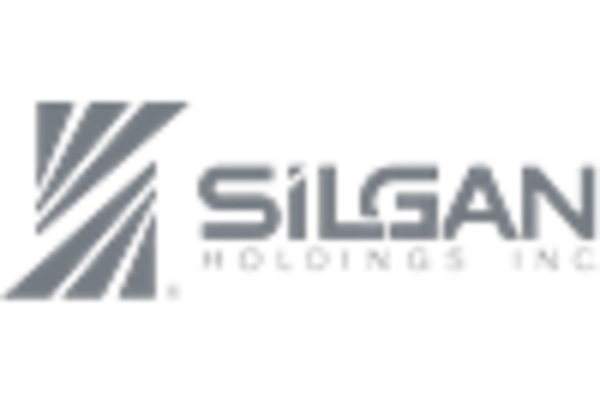









Leave a Comment